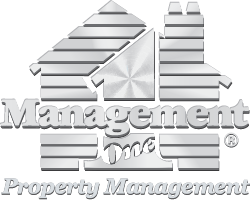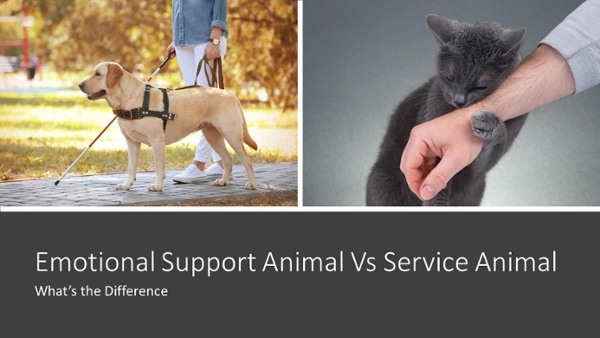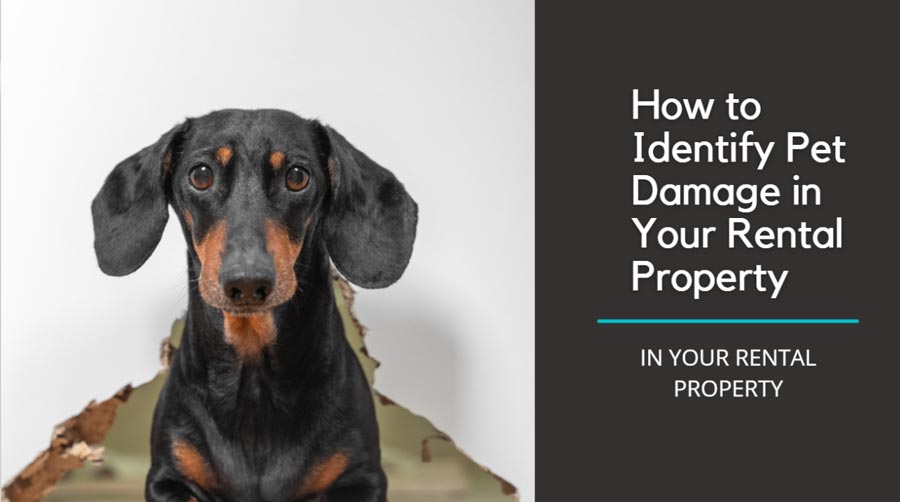
How to Identify Pet Damage in Your Rental Property
During my time as a property inspector, I’ve walked through hundreds of homes and encountered all kinds of pet-related damage. Sometimes, it’s obvious—the kind that practically announces itself the moment you step through the door. Other times, it’s more subtle, hidden beneath the surface, and requires a bit of investigation to uncover.
Common Types of Pet Damage You Might Encounter:
- Urine stains and odors – These are usually the most noticeable, especially on carpets. The smell can linger if not properly cleaned.
- Scratched walls, doors, and door frames – Pets often scratch or bite when trying to get through closed doors.
- Torn window screens and blinds – Pets like to look outside, and sometimes they leave behind damage around windows.
- Ripped carpet or damaged flooring – Scratching, digging, or accidents can cause visible wear on carpets and floors.
- Chewed fences – In backyards, dogs may chew or dig around fences if left alone for long periods.
- Water damage – Not as common, but it happens. (My cat has turned on faucets before—lesson learned!)
Some damage is obvious, but other issues require a closer look. Knowing what to watch for helps you catch problems early and maintain your rental home.
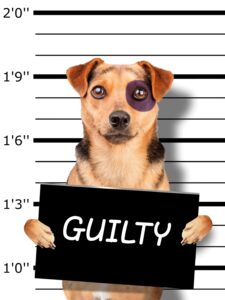
Urine and Poo Damage
Urine stains and odors are usually easy to spot in a vacant home, but not always. I once inspected a property where the tenants had hired two carpet cleaners. The home smelled like a mix of rose, cinnamon, and kennel. However, the odor returned quickly. The problem? The urine had soaked into the padding and subfloor.
In cases like this, surface cleaning won’t work. The only fix is to remove the carpet and padding, then treat or seal the subfloor with products like Natures Miracle or Kilz.
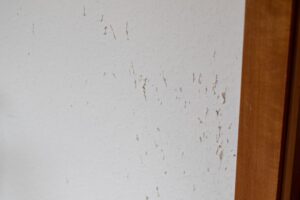
Damaged Walls
Damage to walls, doors, and door jambs is usually easy to spot. But when it’s widespread throughout the home, it’s important to carefully document and photograph each instance. I’ve seen cases where anxious dogs left alone for long periods clawed through entire sections of drywall.
Cats tend to cause damage of their type, often around windows. Blinds in their way are quickly shredded, and screens may be torn or bent from repeated use as a perch. Dogs can be just as rough, especially around windows and doors.
From ripped-up carpet to chewed fences, even the most lovable pets can cause serious wear and tear. And while many fences can hold up for a while, few stand a chance against a strong, determined dog—unless, of course, it’s a brick wall.
Pet Damage Varies
Most dog damage, for example, is easy to spot. Or smell. Dogs tend to cause urine damage, door/wall scratches, and torn-up carpet, as mentioned above, particularly at exit doors, and bedroom doors.
Cats are a little more complicated, but you'll find torn and punctured window screens, and "going to the bathroom in wrong places" problems, too.
Birds, such as parrots, you'll find wall pecking, next to where cages are kept. They can easily chip paint off stucco and wood if their cage is too close to a wall. I recently learned this one. Lizards, such as bearded dragons, really don't damage much, but they do produce a pungent smell from their cages or aquariums.
Aquariums with fish generally only cause damage when an aquarium leaks. Tortoises, though slow and lumbering, can cause more damage than one might think. They can topple weak wood fences; they can shatter sliding glass doors. Their shells can flake paint off the exterior of the house as they tromp past. This I know from personal experience.
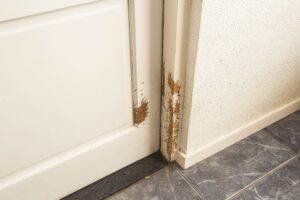
Eyes, Ears, Nose
The subtitle items, above, are in no order. However, what you see is, in most cases, the most important. If you can see it, you can photograph it. Simple as that.
Eyes
Check for signs of urine and droppings, both inside and outside the property.
Outdoor male dogs, in particular, tend to urinate on air conditioning condenser units—the large metal boxes that sit next to the house. If your property has a roof-mounted unit, you don’t need to worry much about this, as it would be unusual for a dog to reach that height.
However, if the unit is ground-level, this behavior can cause significant damage. The urine can corrode the aluminum tubing, leading to coolant leaks that are not repairable. When inspecting, look for discoloration on the aluminum fins and pitting on the tubing.
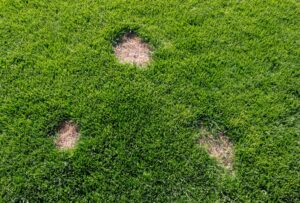
People often forget about dog toys, food dishes, bags of dog food, and puppy pads when vacating a property. Additionally, backyard droppings are frequently overlooked. Be sure to look for these signs when inspecting the yard. Paw prints are especially telling—dogs typically don’t wander into random homes and leave tracks behind.
Inside, pay attention to torn-up carpet and flooring. Check all surfaces for scratches or worn paint on the bottoms of interior doors and jambs, as well as on exterior doors. Sliding glass doors, both inside and out, can also show signs of damage from pets. Don’t forget to inspect window jambs for scratches—Fido loves looking outside, and it shows!

Nose
You might think that smell is the most effective way to detect an unauthorized pet, and residents often think the same. When I arrive at a property for an annual inspection and it’s dark, my alert level automatically rises. Scented candles burning? A pot of potpourri on the counter? All of the above? There's about a 90% chance there's a pet nearby. The goal here is clear: to mask any signs of a pet from both sight and smell.
This is when you need to step up your game and take a more thorough approach.
Ears
It’s simple: Ring the doorbell, and if there are pets inside, your other senses will quickly take over.
The Spot Check
Whenever you're conducting a spot check—assuming you have an appointment—arrive about 30 minutes early. This simple step has helped me uncover more unauthorized pets than any other method I've tried.
In one case, while completing paperwork from a prior inspection down the street, I observed a young child exit the appointment property with a small dog on a leash. They walked to a car parked across the street, got into the back seat, and quickly slouched down. I waited an additional 20 minutes, but no one else joined them.
When I arrived at the property at the scheduled time, there were no visible signs of a pet—no toys, no droppings, no odor, and no damage. At the end of the visit, I asked the resident about their dog. Their reaction was immediate—denial and indignation. They insisted they didn’t have a dog or a child, claimed that the car wasn’t theirs, and even denied that a car was parked out there at all.
I calmly informed them that I would include all observations in my report. Sometimes, direct evidence isn’t indoors—it’s about being observant and arriving just a little early.
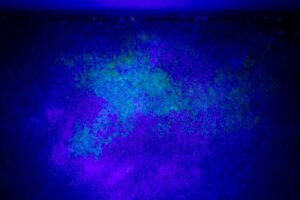
Black Light
One tool we've recently added to our inspections is a blacklight flashlight—and it's proven to be incredibly helpful in identifying pet-related damage. Interestingly, it doesn’t just reveal pet stains; it also highlights traces of bodily fluids that might otherwise go unnoticed.
Now, before anyone gets squeamish, here’s some perspective: that bathroom in your home may look spotless under regular lighting, but once you shine a blacklight on it, you’ll likely be surprised by what it reveals. It's not about being alarming—it's about being thorough. This tool provides a clearer picture of the property's condition, helping to ensure that nothing is overlooked. You can purchase a Black Light UV Flashlight pretty reasonably online.
When using a blacklight to inspect for messes, be sure to wear blue-blocking sunglasses—this enhances visibility and makes it easier to spot what you’re looking for. And here’s the key takeaway: if you can see it, you can photograph it. And if you can photograph it, you can document and prove it.

Some residents are sneaky
Years ago, before my time with Management One, I began noticing patterns I hadn’t paid much attention to before—specifically, clear signs of pet damage in bank-owned properties. It made sense; when people vacate a home under stressful circumstances, like foreclosure, pet damage often gets overlooked or ignored. In those cases, the job was straightforward: document the damage and report it.
Insurance inspections brought a slightly different challenge. When pet damage was discovered, it wasn’t just about documenting—it meant asking the current occupants about the pet, the nature of the damage, and determining whether the animal might be considered aggressive.
Property management brings its own layer of complexity. Much like insurance inspections, residents often attempt to hide unauthorized pets and any resulting damage. But here, the stakes are higher. A hidden pet isn't just a policy violation—it can lead to eviction or financial liability for the resident.
One striking example I came across involved a tenant in Arizona who was fined $500 simply for feeding a stray cat outside. It was considered harboring an animal and a violation of their lease. While that may seem extreme, it highlights the seriousness with which pet-related issues are addressed in rental housing.

Pets, Pets, Galore….
Pets are a beloved part of the family for many people, sometimes even more so than relatives. In fact, as of 2023, an estimated 145.9 million U.S. households own at least one pet. With so many renters being pet owners, landlords and property managers need to understand both the rewards and the potential risks that come with allowing animals in rental homes. From this, 65.1 million US Households own a dog. Did you also know that a staggering 72% of renters have pets?
While most residents do their best to maintain a clean, damage-free space, pets can still leave behind wear and tear—some of it easy to see, and some not. That’s why it’s important to have clear policies in place and take proactive steps to protect your property.
Want to understand how Emotional Support Animals differ from Service Animals—and what that means for your rental policies? Click here to learn more.
